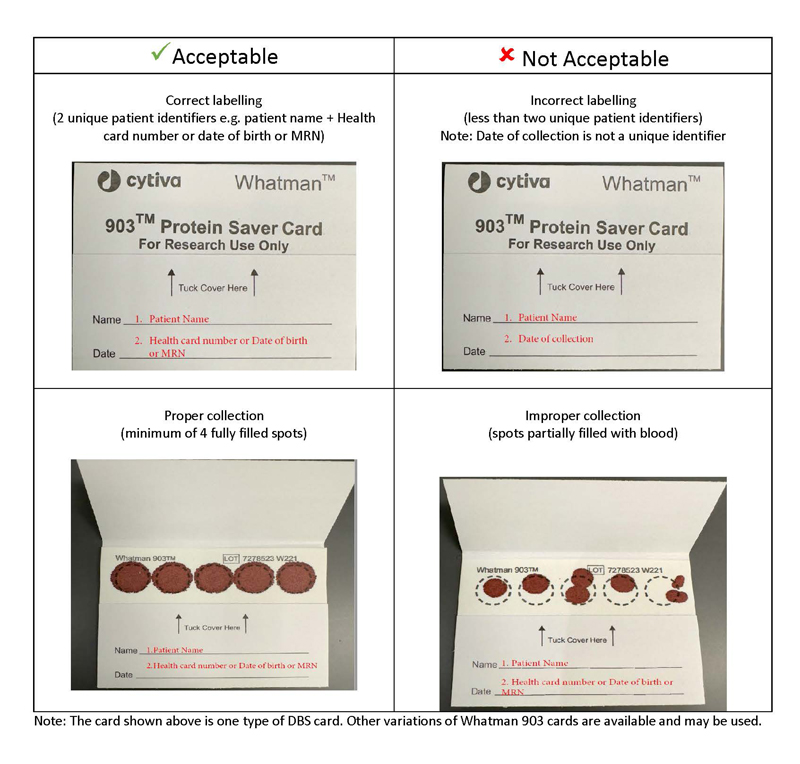
HIV – PCR
Consistent with O. Reg. 671/92 of the French Language Services Act, laboratory testing information on this page is only available in English because it is scientific or technical in nature and is for use only by qualified health care providers and not by members of the public.
Background
This page provides qualitative nucleic acid test (NAT) information for human immunodeficiency virus types 1 and 2 (HIV-1/-2), which are the causative agents of acquired immunodeficiency syndrome (AIDS), at Public Health Ontario (PHO). For information regarding other testing options, refer to the following PHO webpages:
- HIV – Diagnostic Serology
- HIV-1 Genotyping, Resistance, Tropism and HLA-B*57:01 Abacavir Hypersensitivity Testing
- HIV-1 Viral load
Updates
- Updated testing indication from pregnant women to high-risk pregnant women
Testing Indications
HIV-1/-2 NAT is used for the qualitative detection and differentiation of HIV-1 and HIV-2 RNA in human serum, plasma, and dried blood spots (DBS)*. The test is intended to be used as an aid in the diagnosis of HIV under specific conditions:
- infants born to HIV-positive or high-risk mothers;
- high-risk pregnant women;
- resolution of indeterminate HIV antibody test;
- diagnosis of acute infection prior to seroconversion (window period);
- transplant patients receiving immunosuppressive drugs.
*DBS is not Health Canada-approved but has been validated by PHO to be used for HIV PCR testing.
For more information on HIV testing recommendations, refer to Ontario Guidelines for Providers Offering HIV Testing.
Acceptance/Rejection Criteria
- Unspun primary blood collection tubes will be rejected. Spun PPT and SST are acceptable.
- Plasma collected using anticoagulants other than EDTA will be rejected.
- Dried blood spot cards with spots not fully delineated with blood will be rejected.
- Donor testing is not available through PHO’s laboratory. Specimens from patients being screened as potential donors (e.g. organ, tissue, cells, fertility, etc.) should be referred to a laboratory that performs donor screening assays. Specimens received for donor screening at PHO’s laboratory will be rejected.
Specimen Requirements
| Test Requested | Required Requisition(s) | Specimen Type | Minimum Volume | Collection Kit |
HIV-1/-2 PCR |
Serum or Plasma |
750 μl for PCR only or 1.2 mL if HIV Serology is required |
Serum separator tubes (SST), BD Vacutainer Plasma Preparation Tubes (PPT) or EDTA blood tube |
|
HIV-1/-2 PCR |
DBS3 |
1 card |
Whatman 903 Cards or equivalent |
Submission and Collection Notes
Specimens may be stored at 2°C to 25°C and must be centrifuged within 24 hours of collection. If using blood collection tubes without gel separators, serum or plasma must be separated and transferred to aliquot tubes immediately before sending to PHO. Spun SST or PPT can be sent to PHO, but a separated and aliquoted serum or plasma is preferred. Centrifugation should be performed according to the tube manufacturer’s instructions. Serum or plasma can be stored in secondary tubes for up to 24 hours at 30°C followed by up to 5 days at 2°C to 8°C or up to 6 weeks at ≤-20°C.
DBS cards must have at least four (4) fully delineated spots that are allowed to dry completely before submitting to PHO. DBS must be transported to PHO in individual sealable bags containing a desiccant sachet at room temperature. Appropriately prepared DBS specimens are stable at room temperature for up to 30 days. PHO does not provide supplies for DBS collection and shipping.
Supplies may be ordered from the following suppliers:
- Whatman 903 Proteinsaver Card
- Cytiva Lifesciences: Product no: 10534612
- Fisher Scientific Canada: Product no: 05-705-121
- VWR Canada: Product no: CA28170-017
- Liquid Tight specimen bags
- Cytiva Lifesciences: Product no: 10534321
- Fisher Scientific Canada: Product no: 0980015
- VWR Canada: Product no: CA89027-020
- Dessicants
Complete all fields of the requisition form, including:
- Test(s) requests and indications for testing
- Patient setting, specimen type and site
- Relevant clinical information
Label the specimen container(s) with the patient’s first and last name, date of collection, and one other unique identifier such as the patient’s date of birth or Health Card Number. For additional information, see: Criteria for Acceptance of Patient Specimens. Failure to provide this information may result in rejection or testing delay.
Do not submit glass tubes.
Limitations
Haemolysed, icteric, lipemic or microbially contaminated serum is not recommended for testing.
*DBS is not Health Canada-approved but has been validated by PHO to be used for HIV PCR testing.
Storage and Transport
Place specimen tube in biohazard bag and seal. Place completed HIV Serology and HIV PCR Test Requisition in the pouch at the front of the biohazard bag.
Specimen tubes should be stored according to recommend storage requirements as indicated above, and should be shipped to PHO’s laboratory as soon as possible.
All clinical specimens must be shipped in accordance to the Transportation of Dangerous Good Act.
Special Instructions
For testing of women at high-risk of HIV to guide management of the infant after delivery, “high-risk mother” must be indicated on the requisition for HIV PCR. Failure to do so may result in rejection.
Test Frequency and Turnaround Time (TAT)
HIV-1 PCR turnaround time is up to 5 business days from receipt by PHO’s laboratory. Testing is performed at least 3x during the week.
HIV-2 PCR negative results are reported within 5 business days. A HIV-2 RNA positive result is reported as presumptive positive and requires referral to the National Laboratory for HIV Reference Services (NLHRS) in Winnipeg for confirmation. Turnaround time is up to 14 days from receipt by PHO's Laboratory.
STAT and Critical Samples Testing
STAT HIV-1 PCR testing may be considered on an individual basis for specific circumstances in consultation with a PHO Microbiologist (e.g. high risk woman in labour who are suspected to be in the window period). The PHO Microbiologist can be contacted through the PHO's Laboratory Customer Service Centre at 416-235-6556 / 1-877-604-4567.
STAT samples must be shipped separately from routine specimens in a clearly marked package indicating ‘STAT’ and handled in accordance with the Canadian Biosafety Standards and shipped in accordance with the Transportation of Dangerous Goods Regulations. Failure to ship separately will delay testing.
Specimens for HIV PCR are tested using the Roche cobas® HIV-1/HIV-2 Qualitative assay on the cobas 8800 system. The cobas® HIV-1/HIV-2 Qualitative assay is a NAT for the qualitative detection and differentiation of HIV-1 and HIV-2 RNA in human serum, plasma, or DBS. Specimens are tested simultaneously for HIV-1 and HIV-2, individual testing cannot be requested. HIV-2 PCR positive results are reported as presumptive positive and are referred to the National Laboratory for HIV Reference Services (NLHRS) for confirmation.
Table 1: Analytical sensitivity (limit of detection) of cobas® HIV-1/HIV-2 Qualitative assay
| Specimen Type | HIV-1 | HIV-2 |
| EDTA Plasma | 12.8 copies/mL | 35.4 copies/mL |
| Serum | 12.8 copies/mL | 26.3 copies/mL |
| DBS | 255 copies/mL | 984 copies/mL |
Interpretation
All test results should be interpreted in conjunction with the patient's clinical presentation, history and other laboratory results. The following table provides possible test results with associated interpretations:
|
Result |
Interpretation |
Comments |
|---|---|---|
|
HIV-1/HIV-2 not detected |
No HIV-1 or HIV-2 RNA detected. |
A non-reactive test result does not exclude the possibility of infection with HIV. Persons in high risk groups who are non-reactive should be retested for up to three (3) months following possible exposure to HIV or on presentation of symptoms compatible with HIV infection. |
|
HIV-1detected HIV-2 detected HIV-1/HIV-2 detected |
HIV-1 RNA detected. HIV-2 RNA detected. HIV-1 and HIV-2 RNA detected. |
Pregnant patients and infants (less than 24 months of age) should be referred to a Paediatric HIV specialist for counselling on vertical HIV transmission prevention and/or management of the newborn, and for follow-up testing. |
|
Invalid |
Unable to determine result due to interfering substances. |
Recollect and submit a new specimen for testing. |
Don’t have a MyPHO account? Register Now


